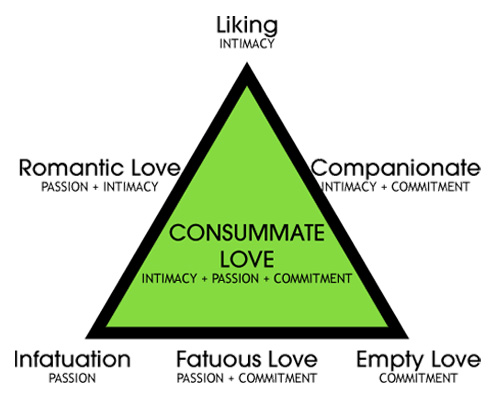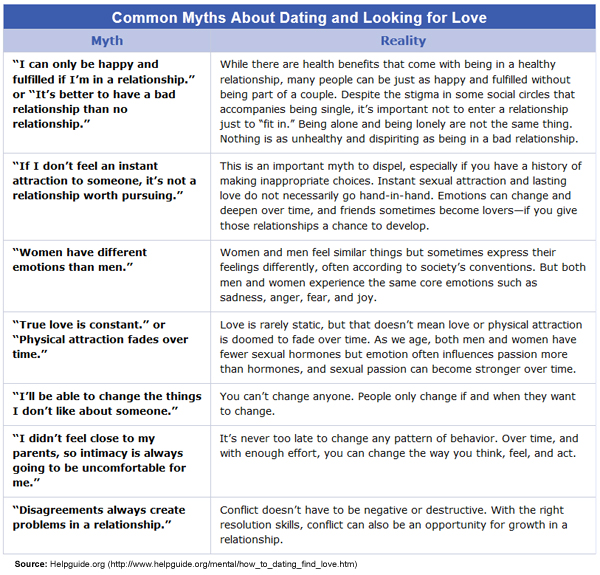No two people communicate in much the same way and all of us struggle to be understood. As adults we develop our own unique ways of using words, gestures, and body language. This unit will investigate concepts in basic communication, intimacy, love, commitment, and passion in a relationship. It is important to understand what factors build strong relationships. We will also look at our sexual selves and when our sexual identity begins to form. How our caregivers treat us helps determine what behaviors are appropriate for our gender. Social constructs play an important role in how we express our sexuality. This unit encourages building acceptance for others who may have different ideas about lifestyle and commitment.
| Accountability | Cohabitation | Common-Law Marriage |
| Family of Origin | Intimacy | Monogamy Resistance |
| Open Relationship | Self-Disclosure | Self-Nurturance |
| Domestic Partnership | Civil Union | Transgender |
| Gender and Building Healthy Relationships: Basic Training |
- Communicating: Keys to Good Relationships:

- Effectively communicating how you feel is a
critical aspect in establishing relationships and enhancing, or
interfering, with the developing relationship.
- When it comes to communication, indeed there is "Venus and Mars" (gender related differences) Click here to review some of these fundamental differences.
- Self-Esteem and Self-Acceptance:
- Your self-concept is like a mental mirror that reflects how you view your physical features, emotional states, talents, likes and dislikes, values, and roles.
- How you feel about yourself or evaluate yourself constitutes your self-esteem.
- Self-perceptions influence communication choices.
- Learning Appropriate Self-Disclosure:
- Self-disclosure is sharing personal information about you.
- Self-disclosure is not storytelling or sharing secrets; it is revealing how you are reacting to the present situation and giving any information about the past that is relevant to the other person's understanding of your current reactions, behaviors and communication choices.
- Do the following to overcome the fear of
self-disclosure:
- Get to know yourself.
- Be willing to discuss your sexual history.
- Choose an appropriate time and places for self-disclosure.
- Becoming a Better Listener:
- Listening is a vital part of interpersonal communication.
- To improve listening skills:
- Focus on the speaker i.e. eye contact, positive body language
- Avoid interruptions and give them your full attention. i.e. put your cell phone away
- Demonstrate understanding of what you hear i.e. nodding, using affirming gestures.
- Avoid challenging and asking too many questions
- Avoid generalities and get to know your speaker
- Be specific in your thoughts and what you need
- Using Nonverbal Communication:
- Nonverbal communication can include all unwritten and unspoken messages, both intentional and unintentional.
- Nonverbal communication can include the following:
- Touch
- Gestures
- Interpersonal space
- Facial expressions
- Body language
- Tone of voice
- Effectively communicating how you feel is a
critical aspect in establishing relationships and enhancing, or
interfering, with the developing relationship.
- Characterizing and Forming Intimate Relationships:

- Intimate relationships can be defined in terms of four
characteristics:
- Emotional availability is the ability to give to and receive from others emotionally without fear of being hurt or rejected.
- Behavioral interdependence refers to mutual impact that people have on each other as their lives and daily activities intertwine.
- Intimate relationships fulfill our needs for intimacy, social integration, nurturance and affirmation.
- Emotional attachment means strong bonds of love and intimacy.
- Intimate relationships can be defined in terms of four
characteristics:
- In the early years of life, families provide the most significant relationships; gradually our circle enlarges to include friends, coworkers, acquaintances, and eventually significant others.
- Being Self-Nurturing
- Two concepts are especially important to any good
relationship:
- Self-nurturance means developing individual potential through a balanced and realistic appreciation of self-worth and ability.
- Accountability means that both partners see themselves as responsible for their own decisions, choices, and actions; they do not hold the other person responsible for positive or negative experiences.
- Two concepts are especially important to any good
relationship:
- Families: The Ties That Bind
- Because the family is a dynamic institution that changes as society changes, the definition of family also changes.
- A family is a recognizable group of people with roles, tasks, boundaries, and personalities whose central focus is to protect, care for, love, and socialize one another.
- Our family of origin includes the people present in our household during our first years of our life where we learn about feelings, problem solving, love, intimacy, and gender roles..
- Establishing Friendships
- Friendships are relationships between two or more people that involve mutual respect, trust, support, and intimacy that may or may not include sexual intimacy.
- Basically, you like people who like you.
- Relationships and Lifestyles
- Most committed partners fit into one of four categories: married heterosexual couples, cohabitating heterosexual couples, lesbian couples, and gay male couples.
- Love relationships involve fascination, exclusiveness, sexual desire, giving, and being a champion or advocate.
- What We Call “Love”:
- Love is usually characterized in one of two ways:
- Companionate love is a trusted and secure connection, similar to what we may feel for family members or close friends.
- Passionate love is a state of arousal filled with the ecstasy of being loved and the potential agony of being rejected.
- Defining Love:
- This is difficult to define because it can mean different things to different people.
- It can be a collection of behaviors, thoughts, and emotions that are associated with a psychological attraction toward other individuals.
- Theories of Love
- Sternberg's Triangular Theory of Love isolates three
components of love:
- Intimacy is the emotional component that involves feelings of closeness.
- Passion is the motivational component that reflects romantic, sexual attraction.
- Commitment is the cognitive component that includes the decisions you make about being in love and the degree of commitment to your partner.
- Anthropologist Helen Fisher suggests that there is a
pattern of falling in love. (see website attached)
- Imprinting: our genetics as well as past experiences trigger romantic reactions
- Attraction: when neurochemicals produce euphoria and elation
- Attachment: endorphins cause lovers to feel peaceful, secure, and calm
- Oxytocin (production of the cuddle chemical): is released, eliciting feelings of satisfaction and attachment.
- Sternberg's Triangular Theory of Love isolates three
components of love:
- Picking Partners
- For both men and women, choosing a relationship partner
is influenced by
- Proximity-being in the same place at the same time.
- Similarities in attitudes, values, intellect, interests, education, and socioeconomic status.
- Physical attraction.
- For both men and women, choosing a relationship partner
is influenced by
- Love is usually characterized in one of two ways:
- Committed Relationships:

- Commitment in a relationship means that one intends to act over time in a way that perpetuates the well-being of the other person, oneself, and the relationship.
- Marriage:
- Within the US, marriage refers to the act of entering into a legal agreement. This can include sharing or property, finances and family raising responsibilities.
- Most Americans believe in a monogamous environment.
- In the past, about 90 percent of Americans marry at least once during their lifetime.
- For many Americans the pattern is one of serial monogamy, which means a person has a monogamous sexual relationship with one person before moving on to the same type of relationship with another person.
- An open relationship involves agreement between partners that there will be sexual relationships outside the relationship.
- Cohabitation:
- Cohabitation is defined as two unmarried people with an intimate connection who live in the same household.
- Cohabitation or common-law marriage is lasting 7 years. Some states recognize this in legal matters with regard to real estate and financial obligations.
- Can lack of social validation, health insurance benefits and tax deductions.
- Two persons not legally committed but sharing expenses.
- Gay and Lesbian Relationships:
- Lesbians and gays have the same desire for intimacy as heterosexuals.
- Challenges to gay and lesbian couples include discrimination and dealing with social, legal, and religious doctrines.
- Living the Single Life:
- Increasing numbers of adults of all ages are electing to marry later or to remain single altogether.
- Many singles live rich, rewarding lives and maintain a large network of friends and family.
- Dealing with Couples Concerns:
- Healthy relationships depend on respect, communication, and mutual fondness.
- Jealousy doesn’t fit well into
Relationships
- It can be described as an aversive reaction evoked by a real or imagined relationship involving one's partner and a third person.
- Indicates underlying problems, such as insecurity or possessiveness that may prove to be a significant barrier to a healthy intimate relationship.
- Causes of jealousy typically include the following:
- Previous relationship results and experience.
- Overdependence on the partner.
- Threat because of low self esteem.
- High value on sexual exclusivity.
- Fear of losing control
- Gender Roles
in Modern Society
- Our modern society has very few gender-specific roles.
- Rather than taking on traditional female and male roles, many couples find it makes more sense to divide tasks based on schedules, everyday conveniences, and personal preference.
- Power Sharing versus Power Struggles:
- Power is defined as the ability to make and implement decisions.
- Powerful people are those who know what they want and have the ability to attain it.
- Developing our Expectations:

- Expectations are an expansion of our hopes, values, beliefs and dreams for the future.
- Well communicated expectations can help a relationship thrive.
- Incorporating children into the mix:
- Children change relationships. Important “couple” time
together is affected.
- Resources of time, money and energy are split many ways and couple attention may flounder.
- Our fast paced lifestyles are affecting the way children are raised.
- Important tools to use, regardless of the family structure are consistency, communication, affection, and mutual respect.
- Children change relationships. Important “couple” time
together is affected.
- When Relationships Fail:
- Breakdowns or changes in communication.
- Changes in the value of time with one or both individuals. This can be a hidden problem for concern.
- Why Relationships End
- Reasons relationships may fail
- Illness or chronic illness
- financial concerns
- career problems.
- infidelity
- trust
- differing expectations
- communication collapses
- Changes or differences in sexual needs
- Reasons relationships may fail
- Coping with Failed Relationships
- Tips for coping
with a failed relationship:
- “Rebound” Don't rush into a new relationship prior to grieving for your loss.
- Acknowledge the importance of your feelings and understand the loss associated with this failed relationship.
- Get involved in activities. Find healthful ways to express yourself, rather than turning them inward. Workout, take a walk or talk with friends.
- Have an outlet. Reconnect with old and new friends.
-
Professional assistance may be needed while working through the stages of grief.
- Tips for coping
with a failed relationship:
- Understanding Sexual Health:
- Gender Identity and Sexual Orientation:

- Through a complex interaction between genetics, social factors and physiological factors can help recognize sexual identity.
- Femininity or masculinity is traditionally reinforced by the parents and/or society.
- Children have the language and insight to correctly identify their gender by 18 months.
- Biological sex, gender identity, gender roles, and sexual orientation all blend together to form sexual identity.
- Transgendered or transexualism are words that applies to someone who doesn’t fit within "normal" societal standards of how a woman or a man is supposed to look, to act or to feel.
-
Transgender is an umbrella term for persons whose gender
identity, gender expression, or behavior does not conform to
that typically associated with the sex to which they were
assigned at birth.
- Gender identity refers to a person’s internal sense of being male, female, or something else; gender expression refers to the way a person communicates gender identity to others through behavior, clothing, hairstyles, voice, or body characteristics.
- “Trans” is sometimes shorthand for “transgender.”
- While transgender is generally a good term to use, not everyone whose appearance or behavior is gender-nonconforming will identify as a transgender person.
-
The ways that transgender people are
talked about in popular culture, academia, and science are
constantly changing, particularly as individuals’ awareness,
knowledge, and openness about transgender people and their
experiences grow.
- Transgenderism has always occurred but as a title has only recently been coined in the last 20 years.
- Transgender does not rely on medical procedures. Some opt for medical procedures to align their gender identity but many do not alter their bodies. They can be considered transgendered in either case.
- The person may or may not feel “trapped” in the wrong body.
- Sexual Orientation:
- A person’s enduring emotional, romantic, sexual, or affectionate attraction to other persons.
- Classifications of orientation can be classified as:
- Heterosexuality refers to the attraction of the opposite gender
- Homosexuality refers to an attraction of the same gender
- Bisexuality refers to the attraction of either gender
- Sexual
prejudice refers to negative attitudes, emotions and hostility
towards a specified social grouping.

- Gender Identity Issues:
- Sexual identity and sexual behavior are closely related to sexual orientation, but they are distinguished, with identity referring to an individual's conception of themselves, behavior referring to actual sexual acts performed by the individual, and orientation referring to "fantasies, attachments and longings.”
- Transvestism is the act of dressing in the opposite gender clothes.
- Human Sexual Response Pattern:
- Sexual expression that can include celibacy, kissing and erotic touching, manual stimulation, oral-genital stimulation, vaginal and anal intercourse.
- First stage, excitement/arousal phase: Stimulates vasocongestion which increases blood flow to the genitals. Can be known as a “sex flush”.
- Plateau phase: Responses intensify. The heart rate, blood pressure, respiration rate and muscle tension all increase. Female’s nipples and male’s penis become erect. The penis secretes pre-ejaculatory fluid. Sensory impulses in both sexes reinforce the sexual sensations. This stimulation to the senses leads to the next phase.
- Orgasmic Phase: Peak muscle tension is reached throughout the genital regions. For males this involuntary response (which can voluntarily be controlled) result in the vas deferens and urethra to contract. At this time the prostate and seminal vesicles release secretions. For females, an orgasm is characterized by a rhythmic contraction of the pelvic muscles and vaginal walls.
- Resolution Phase: The body goes back to the pre-arousal state. The heart rate, blood pressure and respiration rate lower and muscles begin to relax. In males, erections subside and may not return for minutes or hours. Women, on the other hand, have the capacity to reach multiple orgasms in sequence.
- Sexually
Transmitted Infections and Disease:
- Sexually Transmitted Infection:
- Infection or invasion of body tissue by a microorganism (bacteria, virus, protozoa) that can be passed from one person to another during intimate bodily contact.
- Infection has the potential to cause disease or illness, but the infected individual is asymptomatic (not experiencing symptoms) and may not feel sick.
- Someone with an STI can unknowing pass on an infection as they are often unaware they are carrying an infection and may not take the proper precautions toward protecting their partner.
- Sexually Transmitted Disease:
- Disease (damage) resulting from
a Sexually Transmitted Infection (above).
- An infection with symptoms
- Disease (damage) resulting from
a Sexually Transmitted Infection (above).
- Common Sexually Transmitted
Infections and Diseases (click on title below to read)
- Sexually Transmitted Infection:
- When Relationships Become Abusive:
- Relationship abuse is a pattern of destructive and/or coercive behaviors used to maintain power and control over another individual.
- Abusive in a relationship is not limited to physical
attacks by the
person who claims to love or care about you.
- Abuse can be emotional, financial, sexual or physical and can include threats, isolation, and intimidation.
- Abuse tends to escalate over time.
- When someone uses abuse and violence against a partner, it is always part of a larger pattern to try and control her/him.
- Types of Abuse include:
- Verbal Abuse: Any verbal attempt to lower partner's self worth
- Destruction of Personal Property: Any attempt to destroy or alter a personal belongings
- Intimidation: Any attempt to use looks, actions, tones, or expressions to scare a partner
- Restriction of Freedom: Any attempt to limit partner's free will
- Abuse of Authority: Any attempt to use authority to control partner
- Sexual Abuse: Any unwanted sexual advance to partner
- Physical Abuse: Any attempt to cause bodily harm to your partner
- Emotional Abuse: Any attempt to manipulate partner's thoughts or feelings
- For Additional Information on Types of Abuse click here for the Center for Relationship Abuse Awareness.
-
 Per
capita, marriage is declining:
Per
capita, marriage is declining:- In the year, 2000 there were 2.32 million new marriages in a population of 281 million persons.
- In 2010, there were 2.1 million new marriages, despite a growing population of 309 million persons.
- Divorce rates in America:
- The divorce rate for first marriage is 41%.
- The divorce rate for second marriage is 60%.
The divorce rate for third marriage is 73%.
- 40 million Americans use online dating services:
- The online dating industry generates $1.8 billion per year and the matchmaker/dating coach business generates $260 million per year in the United States.
- Speed-Dating, invented by a rabbi from Los Angeles in 1999, is based on a Jewish tradition of chaperoned gatherings of young Jewish singles.
- Nearly 40% of men do not feel confident meeting a woman for the first time.
- 44% percent of the adult American population is single.
- The ratio of single men to single women in America is 86 to 100.
- The state of Idaho has the lowest ratio of single people in the U.S. at 40%, the highest being Washington D.C. at 70%.
- 51% of the single people surveyed said that flattery is the best way to attract someone.
- The average amount of time to make a first impression on a man is 15 minutes.
- The average amount of time to make a first impression on a woman is 1 hour.
- The number one relationship argument is money.
Talk'n Stats - Gender Identity and Sexual Orientation:

